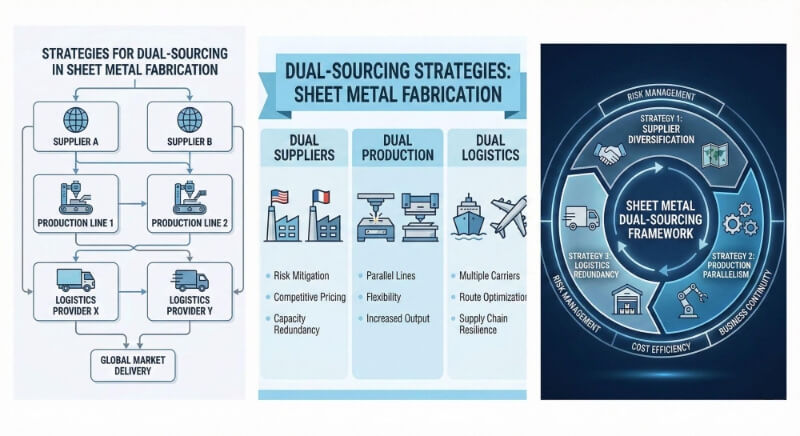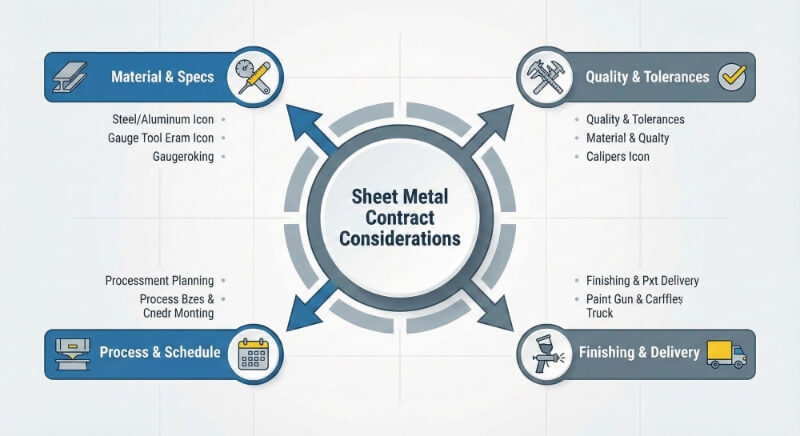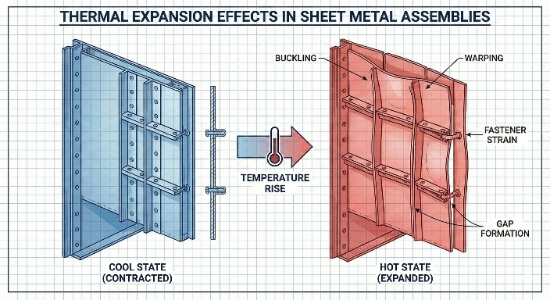Consumers expect functional, durable, and aesthetically pleasing products in today’s demanding market. E-coating emerges as a critical technology, offering a superior finish that enhances the appearance and longevity of products. This advanced process meets the modern need for quality and durability, ensuring items look good and last longer.
This article will cover the many aspects of E-coating – what it is, how it works, its benefits, and where it can be used.
What is E-coating?
E-Coating, or Electrophoretic Deposition, refers to a specific type of paint applied to metal parts. It involves immersing the parts in a bath of paint particles suspended in water. When we apply an electric charge, the paint particles stick to the metal surface.
E-coating System Components
The design of the E-coating System aims to guarantee the highest coating quality. The critical components of the system are:
- Paint Bath: Here, the parts are submerged. The solution contains paint particles that are electrically charged and adhere to metal parts.
- Electrodes: Depending on whether the E coating is anodic or cathodic, the system may include either cathodes or anodes. These electrodes are essential for creating the electrical field required for the coating process.
- Power Supply: This component supplies the electrical charge to drive the coating process. By adjusting voltage and current, we can control the thickness of the coating and its quality.
- Control equipment: Precision in E coating is essential, and control equipment allows us to monitor the process parameters and make real-time adjustments. To achieve optimal coating for each part, we control the temperature of the paint bath, the electrical parameters, and the immersion time.
- Rinsing station: After coating the parts, we move them to the rinsing station to remove any excess paint. This step is crucial for maintaining uniformity in the coating.
Curing oven: This is the final step of the e-coating procedure. It involves curing coated parts in a thermal oven.
E-Coating: How it Works
The E-Coating Process: A Step-by-Step Guide
E-Coating can be broken into several steps.
- Pretreatment: We clean the parts to ensure the coating adheres optimally.
- Immersion: We submerge the parts in the E-coat bath.
- Electrophoresis: A charge of electricity is applied to cause paint particles to migrate to the metal surface and adhere to it.
- Post-rinse: We ensure an even coat by washing away the excess paint.
- Curing: The parts are heated and solidified in a curing chamber, resulting in a durable finish.
What is the difference between Cathodic and Anodic e-coating?
Cathodic E-Coating and Anodic E Coating refer to the charge applied to the painting bath. Cathodic E-Coating involves the coating parts connected to the cathode and attracting positively charged paint particles. Anodic E Coating involves parts connected to the anode that attract negatively charged paint particles.
Pretreatment: its importance for E-coating
The pretreatment step is crucial to the E-Coating procedure. This involves cleaning the metal surface and removing contaminants, oils, and dirt that may interfere with paint adhesion. It may involve degreasing the metal surface, rinsing it, and applying a conversion or phosphate coating to improve paint adhesion.
Types of E-coating
E-coating Formulations Overview
E-coating formulations are available to suit the needs of different industries and applications. Formulations include:
- Epoxy Coatings: These coatings offer excellent corrosion resistance and adhesion, perfect for parts requiring robust protection.
- Acrylic E Coatings: Acrylic coatings offer excellent color and gloss retention. People also favor them for their aesthetic qualities.
- Polyester E Coatings: These coatings are a good compromise between performance and cost-effectiveness and provide corrosion resistance and durability.
E-Coating Materials: Advances in E-Coating Materials
E-Coatings are constantly evolving. Research and development is leading to newer, more environmentally friendly formulations. Recent advances include:
- Low VOC (Volatile Organic compounds) Formulations: These coatings improve workplace safety and reduce environmental impact without compromising performance.
- High Edge Protection Formulations: Designed to offer enhanced coverage and protect sharp edges prone to corrosion.
- Self-Healing Coatings: These advanced coatings contain microcapsules, which release healing agents upon damage. They can repair scratches or nicks and prolong the life of the coat.
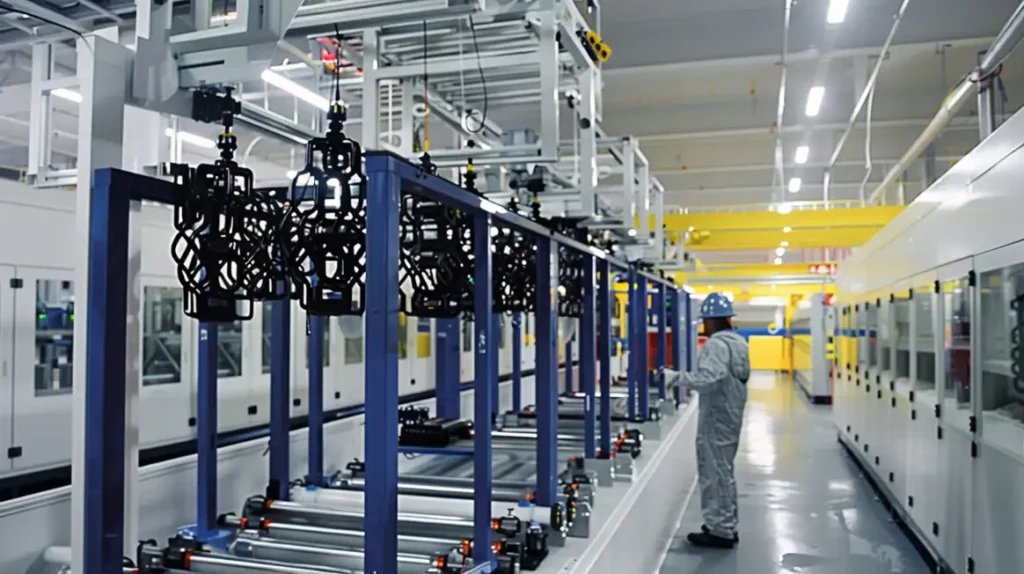
E-Coating: Benefits and Advantages
Protection against corrosion and wear
E-Coating offers unmatched protection from corrosion, wear, and environmental damage. E-coated components can be made to withstand harsh conditions by creating a uniformly adherent barrier that resists chipping and fading.
Uniform coating thickness and appearance
E-coatings can achieve a uniform thickness of the coating. This ensures that the part is consistent in appearance and performs reliably. The process ensures equal protection for every surface.
E-coating has many environmental benefits compared to other finishes.
E-coating offers a more environmentally friendly alternative. It is less harmful to the environment and produces fewer volatile organic compounds. It allows for nearly 100 percent use of the coating, which cuts down on waste and boosts productivity.
E-Coating Applications
E-Coating for the Automotive Industry
E-coatings are essential for protecting a wide range of automotive components from corrosion. We use electrophoresis at Shengen to increase the durability of parts such as wheels, body panels, frames, and underbody components. E-coatings are also excellent primers. They create a smooth, textured surface, improving the topcoat’s adhesion.
Use in consumer electronics, appliances, and other products.
E-Coating is suitable for coating metal components in gadgets, appliances, and personal devices. It is ideal for electronic equipment because the thin, uniform coating doesn’t interfere with fit and function. E-coatings also offer electrical insulation, broadening their use in this area.
Applications in industrial and architectural design
E-coatings provide protection against corrosion caused by environmental factors and chemicals, extending the life of industrial equipment, buildings, and bridges. This coating is precious because it can coat difficult-to-reach shapes and areas.
E-Coating Equipment
E-Coating system components
Several components make up E-Coating systems. The E-Coating system consists of several vital components.
Maintenance and troubleshooting for E-Coating Equipment
E-Coating systems must be adequately maintained and troubleshooted promptly to ensure smooth operation. Cleaning the paint bath and inspecting and cleaning the electrodes are regular maintenance tasks.
Prepare for E-Coating
Surface preparation techniques
Surface preparation is an essential step in the E-Coating procedure, as it directly influences the durability and quality of the finish. The techniques used include blasting the surface to clean and smooth it, degreasing oils and greases, and applying chemical treatments.
Handling and rack strategies for efficient coating
Efficient handling and racks enhance E-Coating’s uniformity and throughput. One of our strategies is using custom racks to hold parts in the optimal orientation for coating. This allows for uniform electrical distribution throughout the E-Coating procedure, resulting in uniform coating thickness.
E-Coating quality control measures
The quality control process includes visual inspections to ensure cleanliness and surface preparation, adhesion testing to confirm the effectiveness of surface treatment and thickness measurement of pretreatment layers. We also use process control measures such as monitoring and adjusting the chemical composition in pretreatment baths to maintain consistency.
Details of the E-Coating Process
Electricity and E-Coating
The electric current facilitates the deposition and migration of paint particles on the metal surface. When submerged in paint, the parts of E-Coating act as electrodes. Applying a direct voltage attracts paint particles to the part’s surface and forms a uniform, adherent coating.
Bath management and solution formulation
The management of baths is crucial to the effectiveness of the E-Coating Process. This requires regular monitoring and adjustment of the solution composition, including paint concentration, levels of solvent, and pH balance.
The impact of different curing methods on the finish quality
The final step of the E-Coating procedure is curing. This involves heating the painted parts to form a durable and complex finish. Curing parameters and methods, including temperature and duration, are optimized according to the type of E-Coating and the material used.
E-Coating: Common problems and their solutions
E-coating problems include inadequate adhesion or uneven thickness. Solving these problems requires a systematic approach. Start by evaluating the pretreatment process to ensure proper preparation of the surface. E-coating parameters and composition, including voltage and paint concentration, can be adjusted to address uniformity and coating thickness issues. Maintenance of equipment such as filtration systems, anodes/cathodes, and electrical fields can help prevent defects due to contamination.
E-Coatings vs. other coating technologies: pros and cons
It is essential to choose the right coating technology for your application, taking into account performance, aesthetics, cost, and environmental factors. We will compare the pros and cons of E-Coating and other popular coatings to give you a complete perspective.
E-Coating
Pros:
- Uniform Coating: Ensures comprehensive protection by achieving uniform coating in complex shapes and difficult-to-reach places.
- Excellent Corrosion Resistance: Ideal for automotive and industrial parts.
- Environmental Efficiency: Uses water-based products and produces minimal hazardous waste by eco-friendly methods.
- Cost Effective for High Volumes: Highly efficient due to automated processes and minimal waste of material.
Cons:
- Limited Colour Range: Available in fewer colors than powder coating.
- Curing requirements: Parts may not be suitable for all materials.
- Thickness Restrictions: Provides a thin coating compared to powder coatings, which is insufficient for applications requiring thick protective layers.
Powder Coating
Pros:
- Durability: Provides a thick and durable finish that is resistant to scratching, chipping, and fading.
- Aesthetic Varieties: Various finishes and colors are available, including metallics and textures.
- Environmentally Friendly: Produces zero volatile organic compounds (VOCs), allowing nearly full material use.
Cons:
- Cost: Generally, it is more costly than e-coating for small batches.
- Heat Sensitivity: Only applicable to materials that can withstand curing temperature, thus limiting the application of this product on specific substrates.
- Complex Geometries: It can be difficult to achieve uniform coverage when working in complex geometries or deep recesses.
Plating
Pros:
- Aesthetic Appearance: Enhances the visual appeal of a product by providing a high-gloss, decorative finish.
- Functional Property: Provides enhanced conductivity wear resistance and is suitable for electronic and high-wear applications.
- Resistance to Corrosion: Certain plating techniques offer excellent corrosion protection.
Cons:
- Impact on the Environment: The process involves heavy metals and toxic chemicals, which pose environmental and health hazards.
- Cost: It can be more costly than other coating methods.
- Substrate Restrictions: Limited to conductive substrates.
Traditional Painting
Pros:
- Color Flexibility: Provides the broadest range of colors and can easily be matched to specific shades.
- Versatility of Application: Can be used on a wide range of substrates, including wood, metal, and plastic.
- Repairability: If a surface needs refurbishing or repairs, it’s easy to repaint or touch up.
Cons:
- Durability: Less resistant to chemicals, wear, and environmental conditions than other coating methods.
- Environmental Concerns: Solvent-based paints release VOCs that pose environmental and health hazards.
- Unevenity Challenges: Manual application may lead to variations in thickness and finish.
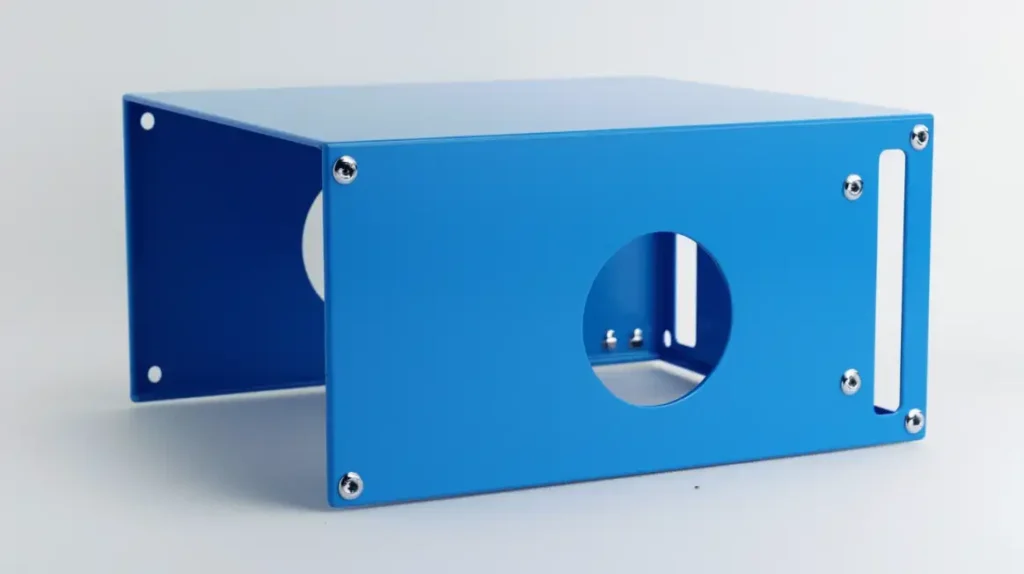
Conclusion
E-Coating is a remarkable technology that combines science, sustainability, and aesthetics. This is an excellent example of how innovative manufacturing methods can improve product quality and reduce environmental impact. E-Coating can make a big difference whether you work in the automotive or consumer electronics industries or design durable home products.
Do you need a reliable sheet metal parts manufacturer? Shengen is the place to go. We specialize in sheet metal laser cutting, bending, surface finish, and sheet metal welding. Reach out to Shengen Today and seek help from professionals!
FAQs:
What is the difference between powder and E-coating?
E-coating or powder coating is best for specific applications and needs. E-coating is ideal for complex shapes, offering excellent corrosion protection and uniformity. The water-based method is also more eco-friendly. Powder coating is a more durable, thicker finish in various colors and textures.
How long does it take to apply E-Coating?
The length of the E Coating process depends on several factors. Factors influencing the process include the part’s size, complexity, and the coating’s thickness. The entire E-Coating process can be finished within a few hours, from pretreatment to curing.
What is the difference between E coating and anodized?
Anodizing and e-coating are two surface treatment processes that enhance metal parts’ corrosion resistance and durability. However, they work on different mechanisms. E-coating is depositing paint or resin onto a metal surface using an electrical current. This results in a uniform protective layer. Anodizing is an electrochemical procedure that transforms the metal surface to a corrosion-resistant anodic oxide finish.
How much does e-coating cost?
Costs of E coating can vary greatly depending on factors like the size, complexity, type, and volume of parts processed. E-coating, in general, is a cost-effective solution for coating, especially when it comes to large-volume production, because of its automated process and efficient use of materials. Prices can vary from a few pennies to several dollars for each part. Large orders usually benefit from lower unit costs.
What is the recommended maintenance for E-Coated surfaces?
E-coated surfaces require little maintenance because of their resistant and durable finish. You should clean the surface regularly with water and mild soap to remove dirt, grime, or chemicals that could damage the coating over time. Avoid using pads or cleaners that are abrasive and can scratch the coating. Check the surfaces for signs of wear or damage.
More Resources:
E-Coating Equipment – Source: Eastman Manufacturing
Quality Control in Coating – Source: Corrosion Pedia
Troubleshooting Electrocoating – Source: Great Dane
Hey, I'm Kevin Lee

For the past 10 years, I’ve been immersed in various forms of sheet metal fabrication, sharing cool insights here from my experiences across diverse workshops.
Get in touch

Kevin Lee
I have over ten years of professional experience in sheet metal fabrication, specializing in laser cutting, bending, welding, and surface treatment techniques. As the Technical Director at Shengen, I am committed to solving complex manufacturing challenges and driving innovation and quality in each project.

